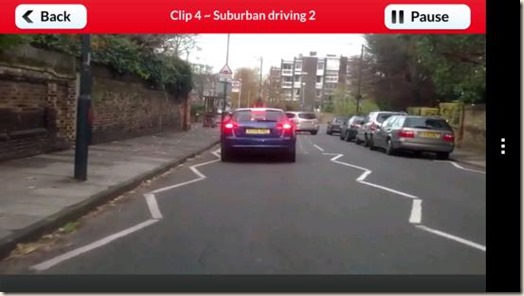This story has been covered in the press and in a DSA email alert, Apparently, the government (I’m not sure if they mean Mickey or Donald) has decided  that drivers need their help. According to The Mail, this means freezing the MoT charge until 2015, erecting signs along motorways to warn motorists of rip-off prices, and “reviewing” the cost of the driving test and provisional licence. Oh, and some stuff about stopping liars and lawyers cashing in on whiplash claims.
that drivers need their help. According to The Mail, this means freezing the MoT charge until 2015, erecting signs along motorways to warn motorists of rip-off prices, and “reviewing” the cost of the driving test and provisional licence. Oh, and some stuff about stopping liars and lawyers cashing in on whiplash claims.
The one about road signs is already the only issue that matters as far as The Mail is concerned.
But in all honesty, it is just a joke. The MoT costs nearly £55, and if I remember correctly that went up from the previous price of £38 about four years ago. An MoT is only required for cars older than three years, and it has to be renewed annually after the first one, so if the price went up now it would only jump by £10-£20. That would equate to a massive additional outlay equivalent up to 5½ pence per day.
I think we’re all grateful to the government for freezing that one until 2015 (even though it will then go up by a larger amount to make up for lost time)!
Then there is the plan to erect illuminated price signs along the motorways so that you know how much it costs to fill up at the services en route.
Ministers hope it will highlight the sums being charged by some garages that believe they have a ‘captive market’, and encourage them to compete for custom.
So, these would be illuminated signs like the ones you get outside garages on non-motorway routes? Fantastic idea, and well worth the hundreds of  thousands of pounds of MPs’ time which were no doubt required to come up with it!
thousands of pounds of MPs’ time which were no doubt required to come up with it!
Returning to Planet Earth, there is then the “review” of the cost of the driving test and a provisional licence. The test costs £62 at the moment, and somehow I can’t really imagine the price going down. Of course, a lot of instructors out there – especially the ones who have recently been trying to get into politics themselves – believe that the test is too expensive on the grounds that the hourly pro rata rate is more than instructors can command for lessons. Some will even go so far as to mention how the test only cost about £5 back in the 70s – even though £5 in 1970 would be worth £65.50 in 2013 money! Even after decimalisation the equivalent today would have been £35 or more. Therefore, the test has not gone up by that much.
But above all that, the structure of the part of government that manages tests is far too bureaucratic to justify being able to cut the price, and the only possible direction – apart from freezing it artificially – is upwards.
Oh yes. And the provisional licence costs £50. It is paid for once by 99% of the population.
If the idiots really wanted to cut costs for motorists they could do two things:
cut fuel duty
prosecute Nottingham City Council for commencing protracted simultaneous road works across the City

 I did a bit of scouting and found this blog entry (don’t be put off by the blog’s title – when it talks of “pert breasts” it is in the new-mummy-and-daddy sense, and apart from such dubious (and nauseating, when you have other peoples kids stuffed in your face – I say this in jest, and mean no harm to the blog in question) content, the article in question is quite interesting. It deals with the same firm, and the author’s own trials with them. Apparently, the money takes months to arrive – if it comes at all.
I did a bit of scouting and found this blog entry (don’t be put off by the blog’s title – when it talks of “pert breasts” it is in the new-mummy-and-daddy sense, and apart from such dubious (and nauseating, when you have other peoples kids stuffed in your face – I say this in jest, and mean no harm to the blog in question) content, the article in question is quite interesting. It deals with the same firm, and the author’s own trials with them. Apparently, the money takes months to arrive – if it comes at all. that drivers need their help.
that drivers need their help.  thousands of pounds of MPs’ time which were no doubt required to come up with it!
thousands of pounds of MPs’ time which were no doubt required to come up with it!